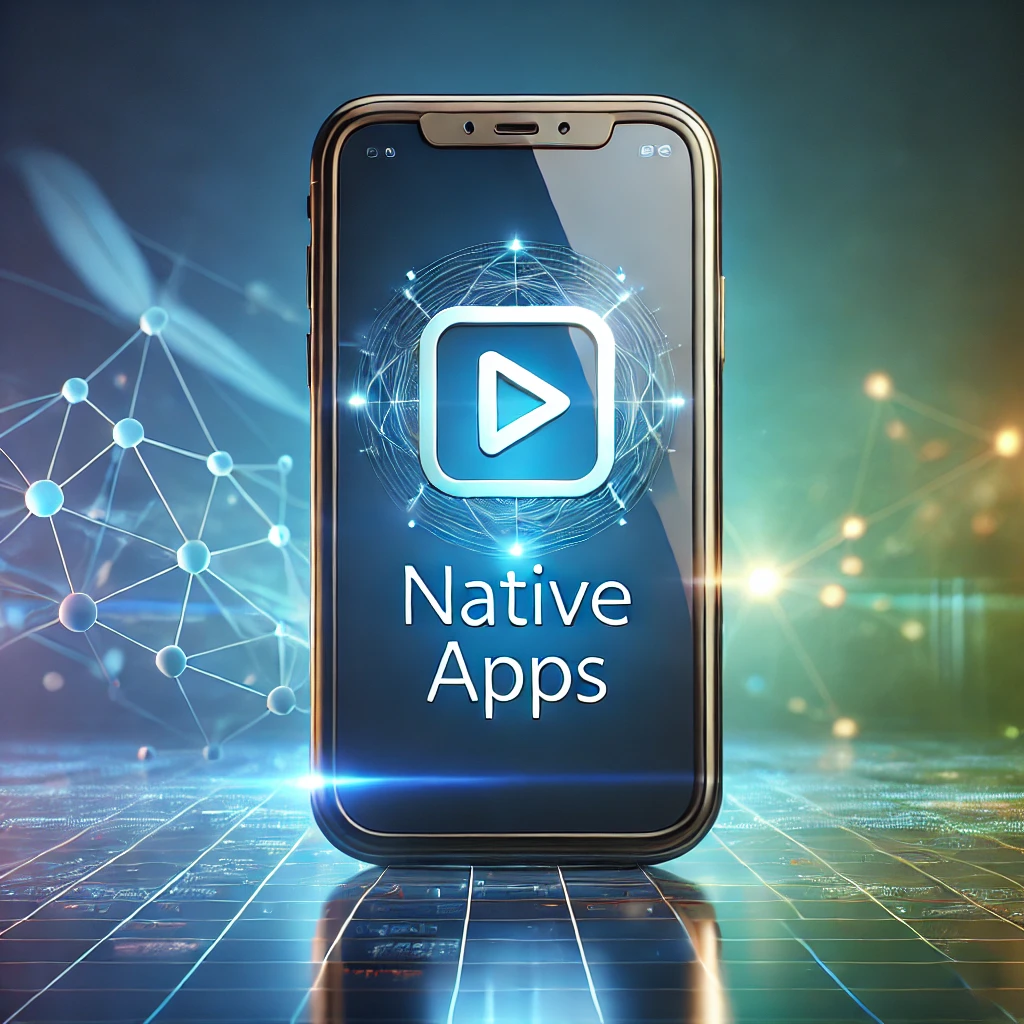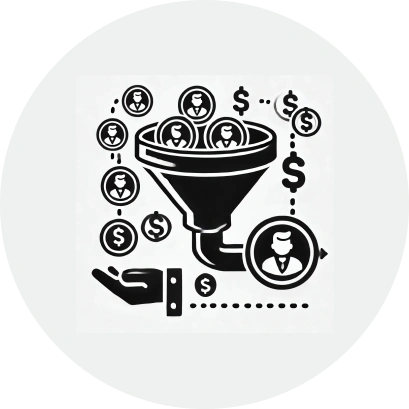The digital era has redefined how people engage with businesses, with mobile and web
applications playing a pivotal role in this transformation. From managing day-to-day
tasks to shopping, booking services, and staying connected, applications have become
indispensable tools in modern life. For businesses, apps serve as a powerful channel to
enhance customer engagement, streamline operations, and improve overall service
delivery.
App development refers to the process of designing, building, and maintaining software
applications for different platforms, including mobile (iOS and Android), desktop, and
web environments. These applications offer users a faster, more personalized experience
and provide businesses with data-driven insights to better serve their customers. With
smartphone usage on the rise, investing in app development has become essential for
businesses seeking growth and customer loyalty.
Why Invest in App Development?
Businesses across all sectors are increasingly realizing the benefits of mobile and web applications. As smartphones have become the go-to devices for millions of users worldwide, apps provide a direct and interactive way to reach customers. A well-developed app can offer real-time communication, loyalty rewards, secure transactions, and other services that enhance the overall user experience.

Enhanced Accessibility and Convenience
Apps provide a one-stop platform for users to access services at their fingertips. Unlike websites, which may require logging in through a browser, apps are always available on a user’s device.

Faster Communication
Mobile apps allow businesses to stay connected with users through features such as push notifications. These notifications can deliver important updates, promotions, and reminders in real time, keeping users engaged and informed.

Personalized Experiences
Modern apps leverage data analytics to offer tailored experiences based on user behavior, preferences, and history. Personalized recommendations, offers, and content help businesses build stronger relationships with their customers.

Increased Customer Retention
Users who find value in an app are more likely to remain loyal to the brand. Loyalty programs, gamification features, and intuitive user interfaces (UI) can encourage users to return to the app frequently, improving retention rates.

Improved Business Efficiency
Apps can automate and streamline various business processes, such as inventory management, appointment scheduling, and customer support. By integrating advanced technologies, such as AI & ML, apps can also improve operational efficiency.
Types of App Development
App development is not a one-size-fits-all process. Depending on the business model and target audience, developers can create different types of applications to meet specific needs. Below are the main categories of app development:
Native apps are designed for a specific operating system, such as Android or iOS. These apps are built using platform-specific programming languages, such as Swift for iOS and Kotlin or Java for Android.
Disadvantages: Requires separate development for each platform, which can increase costs and development time.


Hybrid apps are built using cross-platform frameworks like Flutter, React Native, and Xamarin. These apps use a single codebase to run on multiple platforms, reducing development time and costs.
Disadvantages:
Web apps are browser-based applications designed to provide a mobile-friendly experience. Unlike native and hybrid apps, web apps do not need to be installed on a device. They run on web technologies such as HTML, CSS, and JavaScript.
Disadvantages
Requires an internet connection to function effectively.


Progressive Web Apps (PWAs) combine the best features of both web and native apps. They are accessible through browsers but can be installed on a user’s device for offline use. PWAs provide faster loading times and enhanced user experiences.
Disadvantages
Key Features of Effective Apps
To deliver a high-quality experience, apps must incorporate certain key features that cater to both user needs and business objectives. Below are the features that make an app successful:
.webp)
1. User-Friendly Interface (UI/UX)
Clean design, easy navigation, and clear CTAs enhance usability.

2. Push Notifications
Real-time updates, used strategically to avoid app abandonment.

3. Offline Access
Essential features available without the internet.

4. Integration with Third-Party Services
Supports payments, social logins, and analytics.

5. Secure Data Storage and
Privacy
Encryption, authentication, and strong privacy policies.
The App Development Process
App development involves several stages, each designed to ensure that the final product meets both user expectations and business goals. Below is an overview of the typical app development process:
1. Requirement Gathering
The first step involves identifying the app’s objectives, target audience, and key features. Developers collaborate with stakeholders to understand business needs and user pain points. This phase lays the foundation for the entire project.
2. UI/UX Design
During this phase, designers create wireframes and prototypes to visualize the app’s layout and functionality. The goal is to design a user interface that is both visually appealing and easy to navigate. User feedback may be gathered to refine the design.
3. Development
Developers write the code that brings the app to life. This includes both front-end development (user interface) and back-end development (server-side logic, databases). APIs may also be integrated to provide additional features, such as payment processing or cloud storage.
4. Testing
Comprehensive testing is conducted to identify and resolve bugs or performance issues. Different types of testing—such as functional testing, performance testing, and security testing—ensure that the app works reliably across various devices and operating systems.
5. Deployment
Once the app passes all tests, it is deployed to platforms such as the Google Play Store and Apple App Store. Developers handle tasks such as app submission, compliance with platform guidelines, and server setup.
6. Maintenance
App development does not end with deployment. Regular maintenance is necessary to fix bugs, update features, and ensure compatibility with new operating system updates. User feedback also plays a crucial role in guiding future improvements.
Technologies and Platforms in App Development
Developers rely on various tools, technologies, and platforms to create apps that meet modern standards. Below are some of the key technologies used in app development:
1. Development Tools
- Android Studio: The official integrated development environment (IDE) for Android app development.
- Xcode: Apple’s IDE for developing iOS applications.
- Firebase: A cloud-based platform that offers features such as real-time databases, authentication, and push notifications.
- AWS (Amazon Web Services): Provides scalable cloud infrastructure for hosting and managing apps.
2. Programming Languages
- Java: Commonly used for Android app development.
- Kotlin: A modern alternative to Java for Android development.
- Swift: The primary language for iOS development.
- JavaScript: Used for web apps and cross-platform frameworks like React Native.
3. Frameworks for Hybrid Development
- Flutter: A UI toolkit developed by Google for building natively compiled apps from a single codebase.
- React Native: A popular framework developed by Facebook that allows developers to build cross-platform apps using JavaScript.
- Xamarin: A Microsoft-owned framework that enables developers to create native apps for multiple platforms using C#.
Benefits of App Development
Developing a high-quality app can offer several benefits to businesses, including:
App Development : FAQs
A mobile app enhances customer engagement, provides personalized experiences, and strengthens brand loyalty while opening new revenue streams.
We specialize in developing apps for iOS, Android, and cross-platform frameworks like Flutter and React Native.
We collaborate with you to understand your requirements and develop a customized app that meets your objectives.
Timelines vary based on complexity, but we follow a structured approach to deliver apps efficiently without compromising quality.
Yes, we can integrate advanced features like secure payment gateways, live chat, analytics, and more.
Absolutely. We provide ongoing maintenance, updates, and technical support to ensure your app performs flawlessly.
Yes, we design apps with scalability in mind, so they grow alongside your business.
SEO pricing varies based on the scope of work, industry, and competition. We offer customized SEO plans to fit different budgets and business needs.











